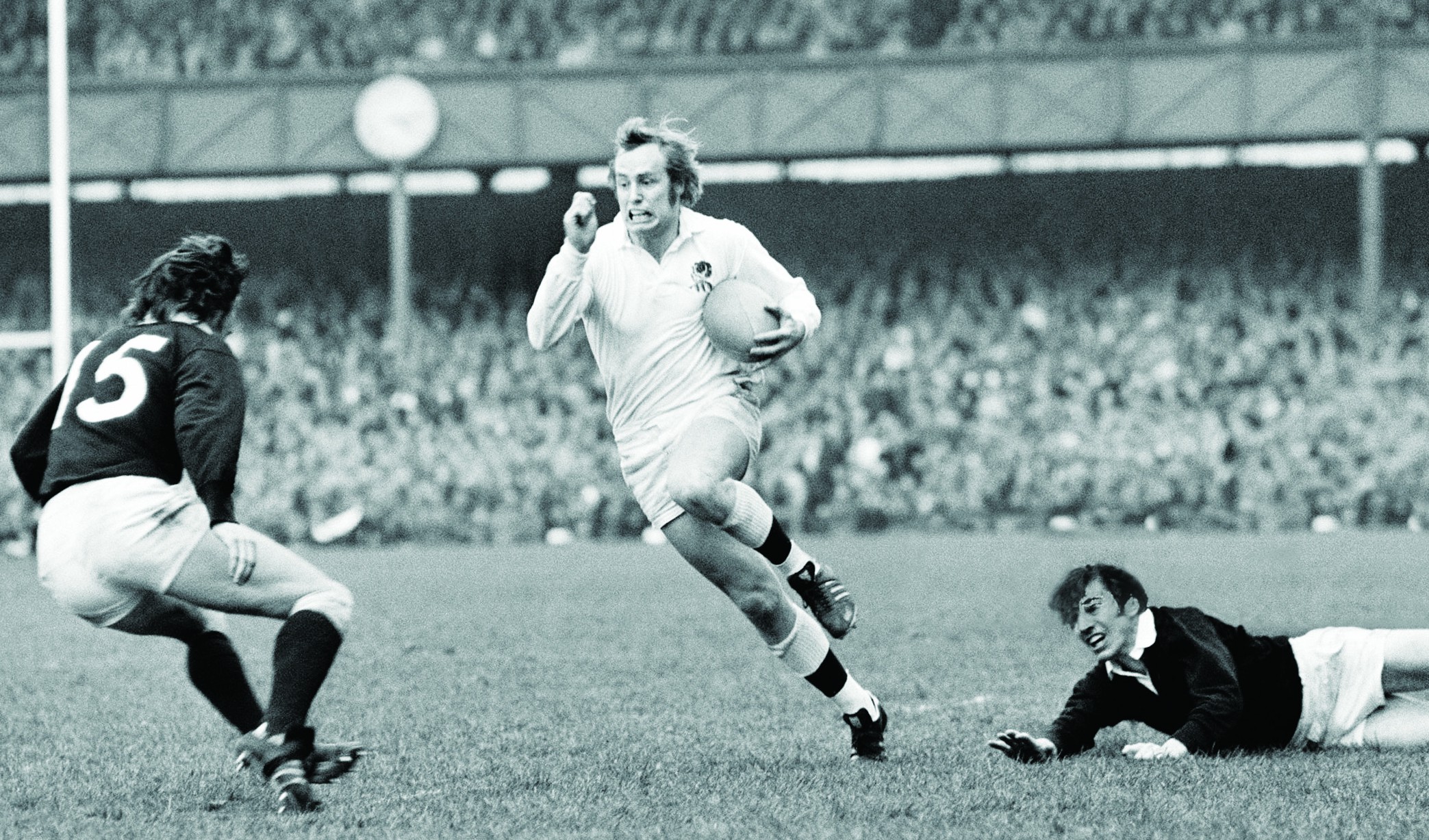Duckham in full flight was a sight to behold

Brendan Gallagher delves into some of rugby’s most enduring images, their story and why they are still so impactful


What’s happening here?
It’s March 17, 1973 and David Duckham is weaving his magic for England on the left wing against Scotland at Twickenham. He has left Billy Steele in his wake and is just about to deal with Scotland full-back Andy Irvine. Few sights in rugby have matched Duckham at full tilt with the wind in his sails.
What’s the story behind the picture?
Years of frustration for England fans wanting to see their world class match winner unleashed. What’s the point of owning a Ferrari if you leave it locked up in the garage all year? Duckham had been world class since scoring a memorable individual try for the Barbarians against South Africa in 1970. England, though, had little idea how to utilise his exotic running talents.
He starred for the Lions in 1971 – he scored six tries in a game against West Coast Buller – and for all the pyrotechnics of Gareth Edwards and Phil Bennett you could make a good argument for Duckham being the MOM in the Barbarians’ famous win over New Zealand a few weeks before this picture.
For England, though, 1972 saw a Five Nations whitewash and they started the 1973 championship poorly with defeats in Ireland – although at least they ‘turned up’ to quote skipper John Pullin – and a 25-9 pounding in Cardiff when they conceded five tries.
But then… a miracle. In their first home game of the tournament England, with nothing to lose, opened up a little and Duckham scored two tries in a 14-6 win over France. The England fans could scarcely believe their eyes and, next up against the Scots, trooped to Twickenham on a perfect spring day full of hope.
What happened next?
England, fired up by Duckham, again produced the goods although the Scots rallied bravely to keep the score to 20-13. Early in the match Duckham produced a memorable, flowing, weaving, dummying dash down the wing that would have been the try of the tournament and probably his career. To these young eyes at the corner of the ground – my first ever Test match in the flesh – he seemed to touch down but two or three Scottish bodies piled on top of him and there was no TMO in those days. Shame.
England powered on. Duckham went close a second time and eventually the scores came. There were two tries from the perennially underrated Peter Dixon, a fine team try from Peter Squires and a late game clincher from Duckham’s Coventry teammate Geoff Evans. Billy Steele crossed twice for Scotland.
Why is this picture iconic?
For some reason there are very few photographs that do Duckham justice. You can look endlessly through various archives and there is virtually nothing there that proclaims the genius of the man… yet those of us who watched him live will swear by his special X-Factor and the TV footage is there for all to see. There can be no debate. Even the Welsh wished they could have him in their great side and dubbed him “Dai Duckham”.
“He had the unique ability to swerve, sidestep and dummy in the exact same instant”
As the instinctive Duckham often didn’t know what he was going to do, the opposition had no idea and perhaps it’s not surprising therefore that photographers had the same problem. He was the most elusive of subjects. Uniquely among rugby players I have seen and reported on, he had the ability to swerve, sidestep and dummy in the exact same instant, something he says he copied from his great Coventry hero Peter Jackson. His long hair would go one way, his hips the other and his eyes in another direction altogether.
But this snap by the great Ed Lacey is the exception. Duckham is up on his right toes, having beaten Steele he is swerving infield and the momentum is from right to left as you look at the image. Andy Irvine has slammed the brakes on in anticipation of such a move… yet being Duckham it is more than possible that he is about to move off in the other direction. He is looking straight ahead, he still hasn’t quite made up his mind.
Despite the heat of battle there is a balance and poise about his running that undescored everything he did but he was also unorthodox, an individualist. Duckham invariably tucked the ball under one arm when in full flow which had schoolmasters around the country cursing – the coaching manuals said both hands – and often when he scored a try he slammed the ball down one handed with an exultant, extravagant, flourish.
We all copied that last habit, some to our cost. In one game against John Fisher School on a late season bonehard pitch I slammed the ball down a la Duckham to score and somehow managed to break my right thumb in two places. Indeed it is giving me almighty grief as I type this very piece.
Footnote: England were in the middle of a rare run of good form in this era. Following back-to-back wins over the French and Scotland they travelled to New Zealand that summer and recorded a famous 16-10 win. Then that Autumn they dispatched the Wallabies in good style. It all looked so promising before bad habits returned and Duckham was again rendered a forlorn figure out on the wing.